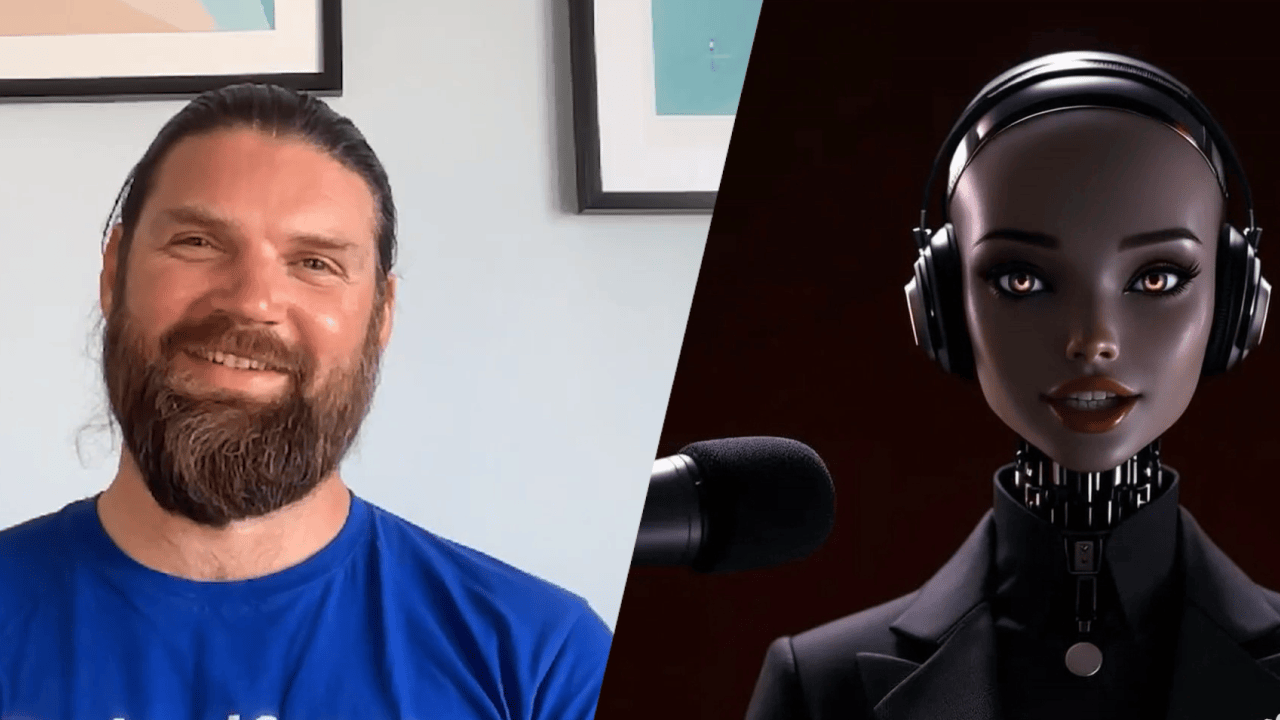
Welcome back to Marketer vs. Machine, the series where marketing’s biggest debates get the heavyweight treatment.
In Round 3, Dealfront’s VP of Marketing Sam O’Brien goes toe-to-toe with the AI ‘CEO’ to settle a question that’s split revenue teams for years:
Should we go all-in on Account-Based Marketing or blast the whole market and hope something sticks?
From building campaigns that support internal champions to avoiding the long-term damage of spammy outreach, Sam makes the case for precision, patience, and relevance. But the Machine isn’t buying the hype — it wants speed, scale, and zero wasted impressions.
Is ABM just old-school sales with a new name? Is mass outreach killing your future pipeline? This round has tactics, tension, and just enough tech shade to make you rethink your own strategy.
Pick a side. Step into the ring. Round 3 starts now.
Let the fight begin.
Ready to level-up your marketing with battle-tested content strategies? Explore how Dealfront equips marketers with the tools to turn engagement into revenue: https://www.dealfront.com/solutions/marketing/
Follow Sam O'Brien: https://www.linkedin.com/in/samuelwobrien/
Connect with us: LinkedIn: https://www.linkedin.com/company/dealfront/ Facebook: https://www.facebook.com/getdealfront/ Instagram: https://www.instagram.com/getdealfront/ TikTok: https://www.tiktok.com/@dealfront X: https://x.com/getdealfront YouTube: https://www.youtube.com/@dealfront
![Sam O'Brien]()
Sam O'Brien
VP of Marketing at Dealfront
00:04 Sam, remind me again why we're doing this whole account-based marketing thing. It still sounds like a glorified sales list with a fancy bow on top. We've been targeting companies forever. Why are we suddenly calling it a BM and making it a whole strategy? I mean, look, you know, marketers, we like to give things fancy names just so we can talk about them together. But I mean, you're not wrong. know, sales have always targeted accounts. Sales of old would have had
00:34 list of accounts that they were going after and they would have been the accounts that they owned. Over time, I think we sort of steered away from that and we stopped looking at the markets and looking at the accounts. We moved more into this sort of everything comes in and let's just worry about what comes in and not worrying about nurturing the market. So I don't disagree. a lot of the tactics here are kind of old. They've been around for a long time and ABM itself has been around for a while. It's not a new tactic. It's not a fad.
01:04 maybe getting more publicity now, or there may be large tech vendors out there talking about it more, but actually, ABM has been around for a long time as a practice. So why are we doing it? When we're targeting these larger companies, these companies that are going to be part of a 12, 18, 24 month sales cycle, we really need to nurture them. We really need to make sure that we're reaching everybody in the company that's part of the buying group. Buying groups have gone from
01:33 Maybe it was like three people a few years back to now it's like 10, 15 plus people. So we need to build our brand within that entire group. We need to nurture them. We need to, in marketing, we need to support sales, making sure that we're warming up the accounts, finding the right people for them, and ultimately making their job easier. But doesn't this all sound a bit bloated? Like we're building campaigns for companies, not people. Aren't we just over complicating things?
02:02 Wouldn't it be easier and faster to just focus on the individual buyer and hit them with messaging that converts rather than trying to win over an entire building? So we're not trying to win over an entire building. But let's take a large enterprise. Let's say there's a, I don't know, 10,000 person company that we want to sell to. Now we're not trying to reach 10,000 people, but let's say we need to reach the IT department. We need the CIO.
02:29 may need somebody in product or technology, but it starts to expand out. There probably is one person who's the champion. I'm not disputing that, but the champion is going to want to speak to and is going to have to internally sell our product. So they're going to want to speak to people inside the company and to them, they're going to have to convince them on our solution. So what we're doing is not only are we supporting our sales team, we're also supporting the internal champion.
02:58 on selling our product internally. We're making it easier for them. So by making sure we're reaching not only our champion, but also the people in the company that he's going to sell to or she's going to sell to, we are then able to really grow our brand and really make sure we're just making sales job a lot easier. More curious now than combative. All right, but how do we know we're reaching the right people? I mean,
03:26 We could be running ads and sending content all day long, but how do we? No, it's not just getting lost in someone's inbox or being ignored by the wrong audience. Isn't this all a bit hopeful? Sounds like we're assuming a lot. No, we're not. We're not assuming. So what we're going to do is we're going to track. Well, first of all, we're going to define who the right people are. So we've looked at our our market. We've looked at the company we're going after and we've looked at who we believe the key decision makers are. So the people that we need to reach.
03:56 We're then gonna track, we're gonna advertise that company, we're gonna track them coming through to the website. Now we're not identifying them at a personal level on the website, just to the company level. But instantly we can see our people from the website visiting. Now the next goal is we've gotta get them in our CRM. If we can get them into our CRM and identify it, then we can start seeing who's coming back to the website. So we now know who our key buyers are, and we now know who the supporting members are.
04:25 And we can track them, visiting the website, engaging with our content, looking at certain pieces of materials that we've created. And what this allows us to do is pass that information back onto sales. We say, hey, Joe Bloggs was looking at the pricing page. Then he went on and looked at this specific case study. Like go and reach out to him, talk about X, Y, Z. Like it just helps the conversations move forward.
04:54 making sure our sales team are contacting them with context, as I mentioned before, and not just blurting out random messages. All right, I'm starting to see it. So we're not just shouting into the void. We're actually orchestrating a coordinated signal based approach supporting the internal champion in and giving sales real Intel, not fluff, huh? I'll admit Sam, this is smarter than I gave it credit for. Still think the name's a bit cringe, but the strategy solid. You win again.
05:23 Yeah, it's one of those things. I think we talk about this name and there's so much out in the market about these expensive tools that you need to have to do account based marketing. And it's just not true. As you nailed on in the very, very beginning, this is a tactic that's actually been around for a long time. Sales have always sold to people. That's always been the fact. And ultimately all we're doing is enabling it to run smoother, involving more of that buying group, making sure we're sending the right information to sales at the right time.
05:53 And if we can do that successfully, sales cycles come down, win rates go up, everybody's happy. Let's do the AI one again, the AI one.
06:22 I liked the approach, I think, talking about the mass outreach, spanning outreach, that's something that's good. So yeah, let's run through that one again.
06:51 We're not writing emails by hand like it's the Stone Age, but I'm definitely not sending out, what did you say? Was it 10,000 emails for a hundred meetings? I don't have a calculator, but I don't think that's a very good conversion rate. Also, I don't really believe everything I read on LinkedIn. People are claiming these big numbers, but I don't think they're right. So what I do agree with is that we can use AI to improve emails and we can add in context and...
07:18 It really makes sure we're sending a good personalized message. But I don't want to get into the mass outreach game. know, people are spamming their market with what they believe is a good result. But actually the results only look good because they're taking so many people that they're emailing. So they might email 10,000 people to end up with 100 meetings, which makes them think they're doing something good. But if we can email 200 people and end up with 100 meetings, our results are 10 times better.
07:49 So that's the angle I'd like to go down. Yeah, but come on. Volume works, doesn't it? Look, I get the whole quality over quantity thing, but isn't it better to fill the top of the funnel and just let sales sort it out? Why would we limit ourselves to 200 people when we could be everywhere all the time with one click? Look, I'm not worried about the sales part and sales sorting it out. You know, if there's a volume there, which is good and the quality is good, then fine.
08:17 But let's table that part of the conversation for now. I want to focus on the market. So let's say we've got a hundred thousand companies in our market and at a click of a finger, we can email 10,000 of them. It's only going to take us 10 days to reach the entire market. Sounds great. Sounds really, really good. And it's like, why wouldn't we do this? But now in 10 days, we've managed to spam our entire market. That's actually probably making our market smaller.
08:47 because people are gonna, they might not do it on day one, on the first email, but over time, they're gonna realize that our content isn't relevant to them. We're just sending out unsolicited emails, we're just prompting people left, right, and center, and they're gonna start putting us into the spam folder, marking us as spam, unsubscribing, doing whatever they can, blocking us, doing whatever they can to stop us from reaching them. So over time,
09:16 A hundred thousand company market has shrunk and shrunk and shrunk and shrunk. And now when we actually have something meaningful to send or we know that the company is in a buying process, we're no longer able to do so. We were no longer able to reach these companies because they marked us down as spam for all those random emails we sent six months ago. Spamming the whole market might win short term, but we burn the bridges. We'll actually need later. I didn't think about it that way.
09:46 You're saying if we treat every cold contact like a disposable click, we're killing future opportunities before they even start. Okay, fine. No AI carpet bombing, but you better believe I still want us using AI just the smart way deal. 100 % the deal. We are not going to not use AI. That was a double negative, but we're definitely going to use AI. And there are ways that we can use it. We can use it to make our messaging like more relevant to the companies.
10:15 We can use it to speed up the cycle by adding in extra context, loads of ways we can use it, but we just won't do the spam route. Let's nurture our market. Let's understand that the market can easily get annoyed with us, can easily start ignoring us, and we don't want to put ourselves in that position, even if it is what people are doing on LinkedIn. All right. You've made your case, and annoyingly, I agree with all of it. Well, stay sharp.
10:44 Stay strategic and still use AI like pros, not amateurs chasing fake LinkedIn.



